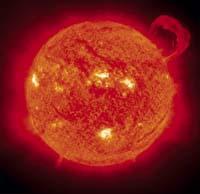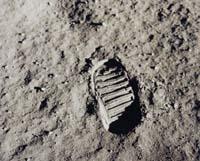50 years of Sputnik

II. During the World War, the young scientist Wernher von Braun, along with other scientists, created the missionary V2, one of them used by Germany to bomb London. This caused the envy of all countries. However, Germany was losing the war. And the Russians approached. His fear, on May 2, 1945, von Braun and 525 others entrusted themselves to the Americans. But they were not empty hands: they carried with them various technical materials, files and tools to manufacture hundreds of V2. When the Russians arrived only remains and secondary scientists remained.
After the war, the world was divided into two parts, and at the ends of those two worlds, the USA and the USSR. Two worlds, two ideologies, two cultures, two well-separated sides, in a new secret war. The rivalry between them led man into the cosmos for the first time.
Military strategy
United States, von Braun; Soviet Union, Korolev. The hidden dream of both was to build a rocket that one day would reach space. But meanwhile, they developed missiles, one at Eisenhower's command, and the other at Stalinen first and then at Khrustxev. It was found that V2 missiles were suitable for transporting explosive, although their design was quite basic. Then, in the 1950s, the atom was the most appreciated weapon and the missiles seemed the perfect way to transport atomic explosives.
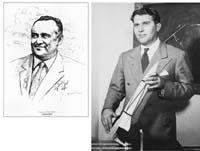
Von Braun's missiles were to be light and small, airborne. At first he had to develop short-range missiles. It seemed to them that their missiles could not travel long distances: The United States had allies all over the world and from its bases could come out bomber planes carrying missiles. By then, von Braun was an American and worked for the U.S. Army. They led a group. In that same decade he insisted that he wanted to send the American authorities an artificial satellite that was going off Earth. Whenever he received the refusal. That the cost was too high, that it was dangerous and that the scientific performance could not be obtained enough to justify the project. Von Braun had to use the Orbiter program designed on the basis of the technology used in the war to put the satellite into orbit, something some didn't like.
On the other side of the world, in the Soviet Union, Korolev was also designing missiles. There, in the absence of allies, how the concern came away, crossing the ocean to the United States, for example. Korolev needed high-powered engines to launch a missile at a long distance. He asked the Glush engineer for help. He soon started working on the right engine design. Creation of RD-107. Soon after, Korolev launched the world's first intercontinental mission. It was August 21, 1957. Missile name: R7.
Intercontinental missiles, known as ICBM, can reach thousands of kilometers, carrying out a ballistic tour that takes them out of the atmosphere. In addition to throwing weapons, they could be able to throw something out of the atmosphere. And it was the R7 rocket that put the Sputnik satellite into orbit. Korolev fulfilled his dream.
Von Braun fulfilled his dream later than Korolev. In 1958 the Americans launched the Explorer-1, their first artificial satellite, created by von Braun and his team. Years earlier, thanks to von Braun's headquarter and the interest shown by different groups, the US authorities gave a green light to the satellite creation project. But for von Braun's misfortune, they did not launch the Orbiter program, but the Vanguard project. With this project he wanted to send Vanguard TV-3 space, the first American satellite. But it broke out. Then came Explorer-1, two months after Sputnik.

What was Sputnik like?
The sputnik was an aluminium spherical body, larger than the basketball ball, 58 cm in diameter. It was tightly closed and contained nitrogen under pressure. Four telescopic antennas emerged from the sphere, as if they were long whiskers: they were in charge of transmitting data and receiving orders. Inside was two radio transmitters powered by electric batteries. If the transmitters had enough force to receive the signal from Earth, radio amateurs around the world heard the bips it sent every 0.3 seconds. Emitted at a frequency of 20.007 and 40.002 MHz. Its total weight was 83.6 kilos.
This first man-made satellite conducted scientific research. He studied various characteristics of the upper layers of the atmosphere. For example, from the study of radio signals information on electron concentration in the ionosphere was extracted. Density was also calculated. They also wanted to know the presence of meteorites, and for this purpose Sputnik, who carried the nitrogen under pressure: if a meteorite hit the satellite, the pressure would drop and the temperature change that occurred, would denounce it. However, there was no collision. On the other hand, in addition to investigating the high atmosphere, Sputnik has also served to see the behavior of the installed equipment and the air conditioning system.
For twenty-one days he was sending information by radio until the charging of the accumulators ended. But Sputnik did not enter the Earth's atmosphere until 3 January 1958. That is, it turned the world for 92 days, with 1,367 orbits around the Earth, about 70 million kilometers. It turned the Earth every 96 minutes and, when orbiting, moved 938 km from our planet and approached 214 km. The third of January 1958 was calcined upon entering the atmosphere. It was the end of Sputnik 1. It is the beginning of many other events.
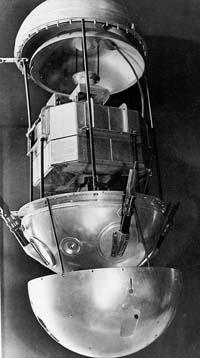
Descendants of Sputnik
For the Soviets, Sputnik was a success and for the Americans a source of fear. In fact, on that artificial satellite the Americans saw a great atomic risk. And they reorganized the space program from top to bottom. This prompted the creation of NASA, which in 1969 led man to step on the Moon.
For several years only the USA. and the Soviet Union had specific space programs, but in 1973 it was decided to create a space agency in Europe and the ESA ( European Space Agency) was created. Since then several probes have been launched to discover and discover Saturn, Venus, the Moon, Jupiter, the Sun and other corners of space. The Paris-based ESA consists of 17 European countries.
In 1991 the Soviet Union and its space programme dissolved. However, Russia has its program, which is carried out by the Russian Federal Space Agency (RKA). The American space agency remains NASA. In addition, there are currently numerous countries in the world that have an agency dedicated to space (Japan, India, North and South Korea, Argentina, Australia, Brazil, Canada, Colombia, Nigeria, Israel...), but among all of them stands out China, which is the only country that has man into space, in addition to the US and Russia.
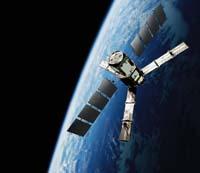
As you can see, the competition to conquer the space that began with Sputnik remains pure.
